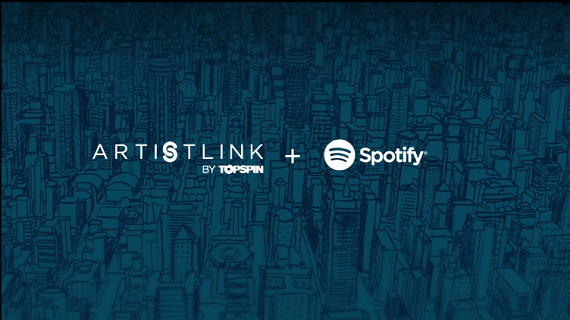
Every time I write about the music streaming space, it always comes down to the same thing: there are just so many companies all vying for what are, essentially, a limited number of listening hours. There’s Pandora, Songza, Microsoft, Apple, Nokia, and Google, just to name a few.
So how does one of these companies make sure that they have a good relationship with artists, and that the artists also have a good n incentive to stay? Give them a nice, new revenue stream.
In a particularly inspired move, Spotify announced on Monday that is now allowing artists to list their merchandise, including t-shirts, vinyl, posters, and bundles, on the site through a new partnership with Topspin. And, what’s more, the artists can do it for free and neither Spotify, nor Topspin, will make money off of what is sold.
Here’s how it works:
First, a Topspin ArtistLink account has to be created, in which it will have to be verified that the person creating the account is the official representative of that artist (they can do this either by connecting one of the artist’s social media accounts or by emailing Topspin).
Once that is done, all they have to do is creating a listing with an image, a title and a description. Each listing will be moderated and approved to make sure it’s a legitimate merchandise offer. Up to three items of merchandise can be listed within Spotify at any given time.
“There are zero fees or commissions from Spotify or Topspin and you don’t need to change how you sell merchandise at all,” the company wrote. “ArtistLink links to your existing merchandise anywhere on the web and displays it on Spotify’s artist pages.”
Spotify says that is has been testing the service for the last month, and “the response from fans has been fantastic.”
“We’re really excited that Spotify’s 24 million music-loving users can now see merchandise and concerts while listening to their favorite artists, and that we, in turn, can provide additional revenue opportunities for artists of all sizes,” the company said.
The feature will not be available to all users just yet; only users in the following english speaking countries will see merchandise listings within Spotify. That means the United States, the United Kingdom, Ireland, Australia, New Zealand, Denmark, Sweden, Norway and Iceland.
This is a pretty genius move to get to in good with artists and their representatives, giving them an added incentive to have a relationship with the company, though it might have been wise for Spotify to take at least a little something off the top, as it is not yet profitable.
Despite taking in $578 million in revenue during 2012, an increase of 128% from the year before, the company also lost $78 million, up from $60 million the year before. There are no figures for 2013 out yet, but Spotify can’t be happy if the trend continues in that direction.
Founded in 2006, the Swedish music-stream company has raised a total of $538 million. It most recently raised $250 million in a round led by Technology Crossover Ventures.
(Image source: http://www.spotifyartists.com)















